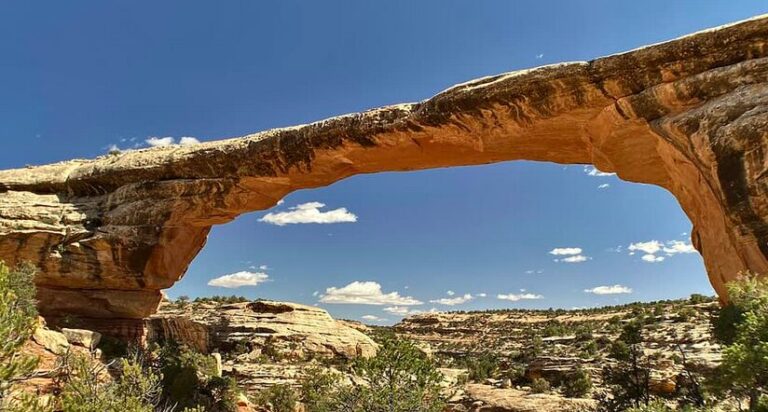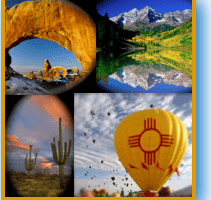Written by Katarina Betterton
Only a handful of settings exist in the world where you can be in two places at once. Even fewer exist that allow you to stand in four different states!
In the southwest of the United States, however, you can stand in four separate states at once. It’s called the Four Corners, and it’s a tourist attraction landmark that invites people from all over the world to experience it.
Keep reading to learn more about the Four Corners, including which states make up the Four Corners landmark, the origin of the name, and what to know when you visit.
The states that make up the Four Corners are Arizona, New Mexico, Colorado, and Utah.
Where is the Four Corners monument located? Well, it’s actually none of the states included. The area around the landmark, known as the Four Corners region, remains part of the Navajo Nation lands and the Ute Mountain Ute Tribe Reservation. Technically, three of the four states lie in the Navajo Nation while the final belongs to the Ute.
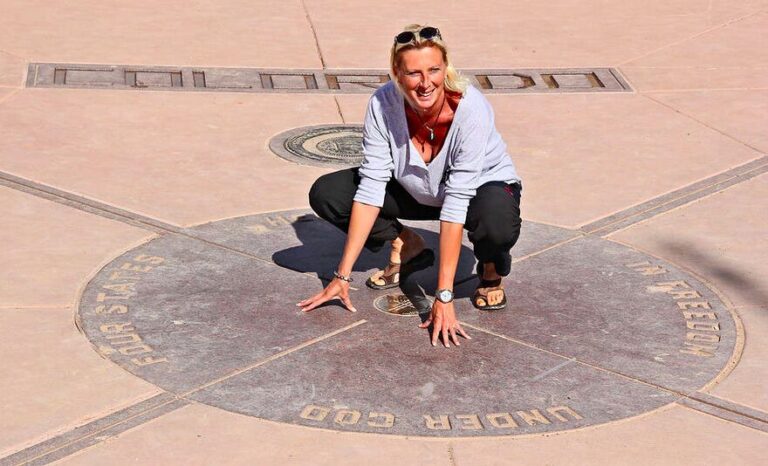
Origins of the Name, the Four Corners
The name “the Four Corners,” comes to the landmark honestly — it’s named for the four corners of states that meet at this particular spot. The Four Corners remains the only place in the United States where four states meet. Conversely, there are over 60 different places in the continental United States where three state lines meet.
Before the 1800s, Native American tribes possessed the land known as the Four Corners. However, after the American Civil War spurred officials to clearly denote the borders of states and territories the nation had claimed in the past, surveyors traveled west to create official state borders. By 1865, the four corners existed side-by-side, though it took another 47 years for the territories involved to become actual states. Surveyors placed the original marker for the Four Corners in 1912.
“It is a Navajo Nation Tribal Park,” said Alexandra Conner, a Colorado local and a travel bucket list blogger. “I have been hearing and learning about this monument since I was little.”
Conner continued, “It originally belonged to the Native American Tribes. During the Civil War, they placed markers to note southwest Colorado territory. After the war, surveyors Darling, Robbins, Reeves, and Carpenter started surveying the true boundary lines between the states.”
Controversy
Despite surveyors’ best efforts to follow the meridian and parallels of latitude and longitude, they didn’t have the modern tools we possess today. Since the official ruling of state borders, some dispute the accuracy of the Four Corners. They believe it should sit around 2.5 miles away from its current spot.
Conner also added, “The first permanent marker was placed in 1913. In 1931, the Navajo government placed the iconic bronze disk that reads “Four states here meet in freedom under God” and features a seal from each state.”
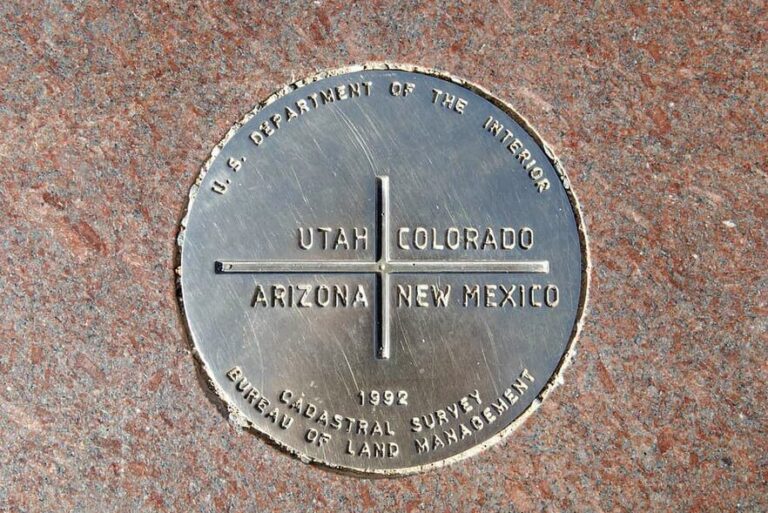
Things to Do Around the Four Corners
The Four Corners monument preserves the natural beauty around the area, leaving most of it wholly untouched. The Navajo Nation recently built a vendor market where native artisans create artwork, jewelry, and more for visitors to purchase. These artisans also make crafts and tribal food as well, like Navajo fry bread and tacos. In addition, a small visitor’s center exists with a Demonstration Center.
Depending on which direction from which you approach the Four Corners, you’ll find a plethora of things to do outside of the rural areas. Visit the Ute Mountain Casino Hotel, drive the Trail of the Ancients scenic byway, or find out what else the Grand Circle has to offer in terms of restaurants, fun, and shopping.
What to Know Before Traveling to the Four Corners
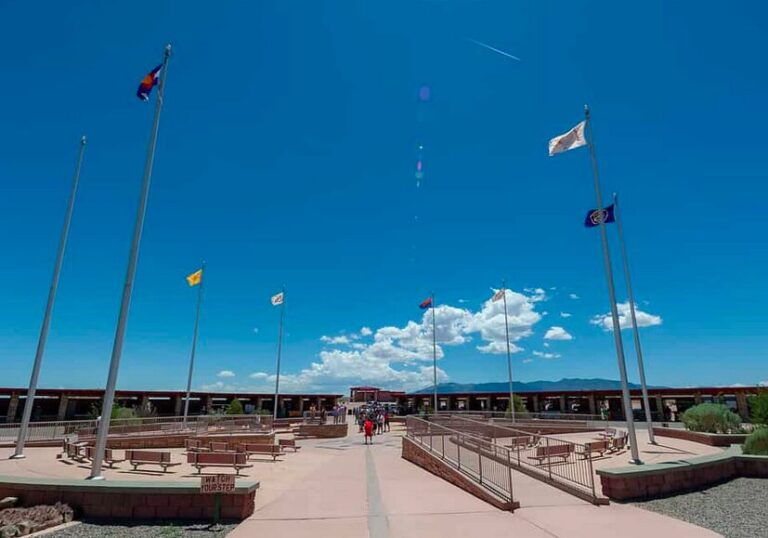
The Four Corners monument has limited accommodations and services. When traveling to the Four Corners, keep several considerations in mind:
The closest gas station is 30 miles away from the monument.
The tribal park location does not have water or electricity.
The entry fee is $8 per person and only accepts credit cards.
The tribal park location, which includes the photo opportunity with the Four Corners, does not accept National Park passes.
Dogs are prohibited but service animals are welcome.
The monument remains closed on all major holidays, including Thanksgiving Day, Navajo Nation Family Day (the day after Thanksgiving), Christmas Day, and New Year’s Day.
On its website, the Navajo Nation Parks & Recreation Department reminds visitors to prepare themselves for long wait times, especially during the peak season of May 1 through May 26. Hours vary based on the season, with the park opening at 8:00 a.m. year-round and closing between 4:45 p.m. and 6:45 p.m.
Remember that this landmark is outside and without cover (besides the newly-created vendor stalls surrounding the photo opportunity). As such, it’s important to check the weather before your trek into the rural land surrounding the monument because Southwestern climates can become unpredictable quickly. It may close without warning at any time if the current weather creates any sort of emergency situation.
Four Times the Fun
Visiting the Four Corners allows you to stand in a unique place in America: four different states at once! Its rarity makes it an interesting attraction to visit — but make sure you read the weather report and have gas before you go! Because the landmark rests amid rural tribal land, there aren’t many conveniences like hotels, restaurants, and gas stations nearby.
